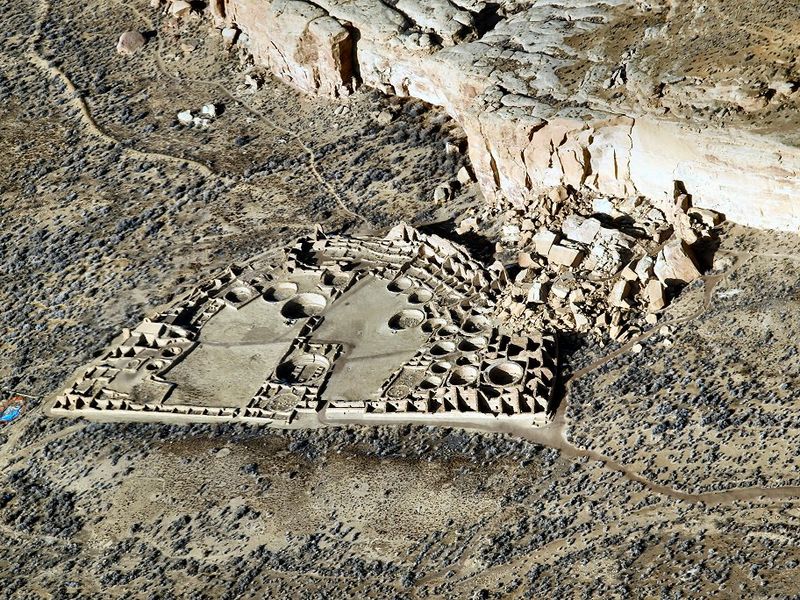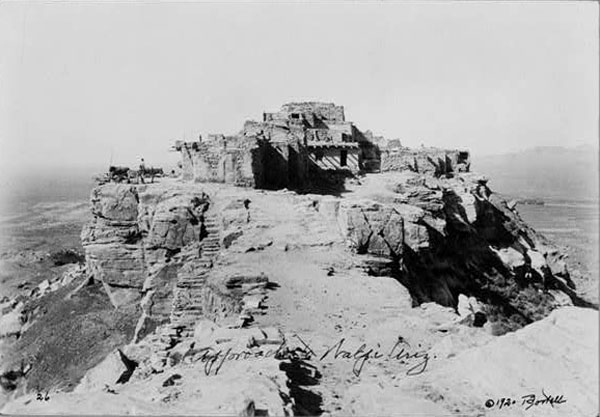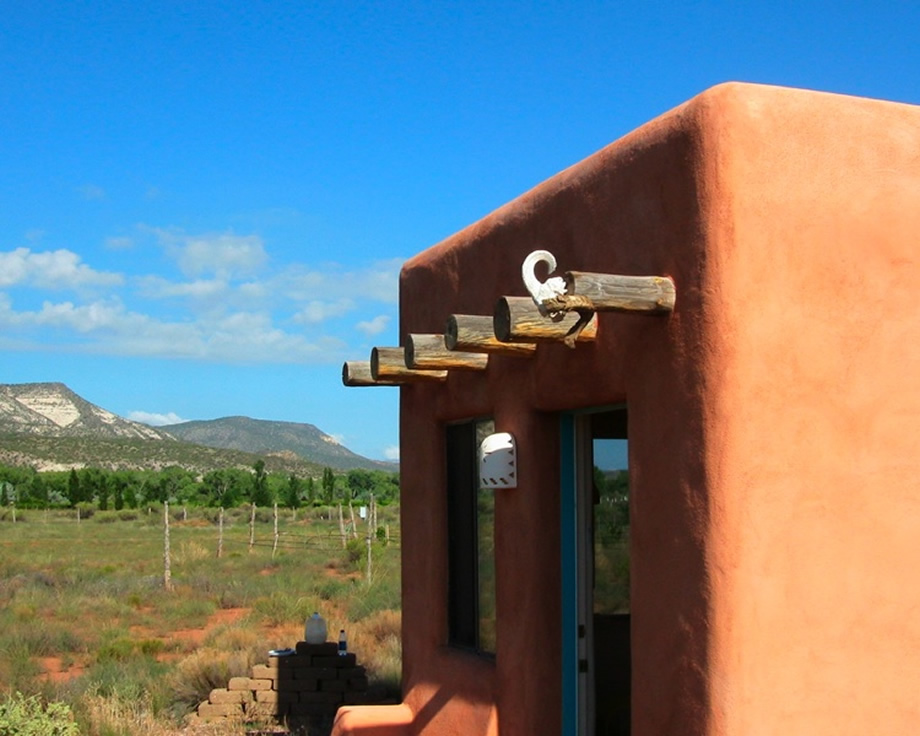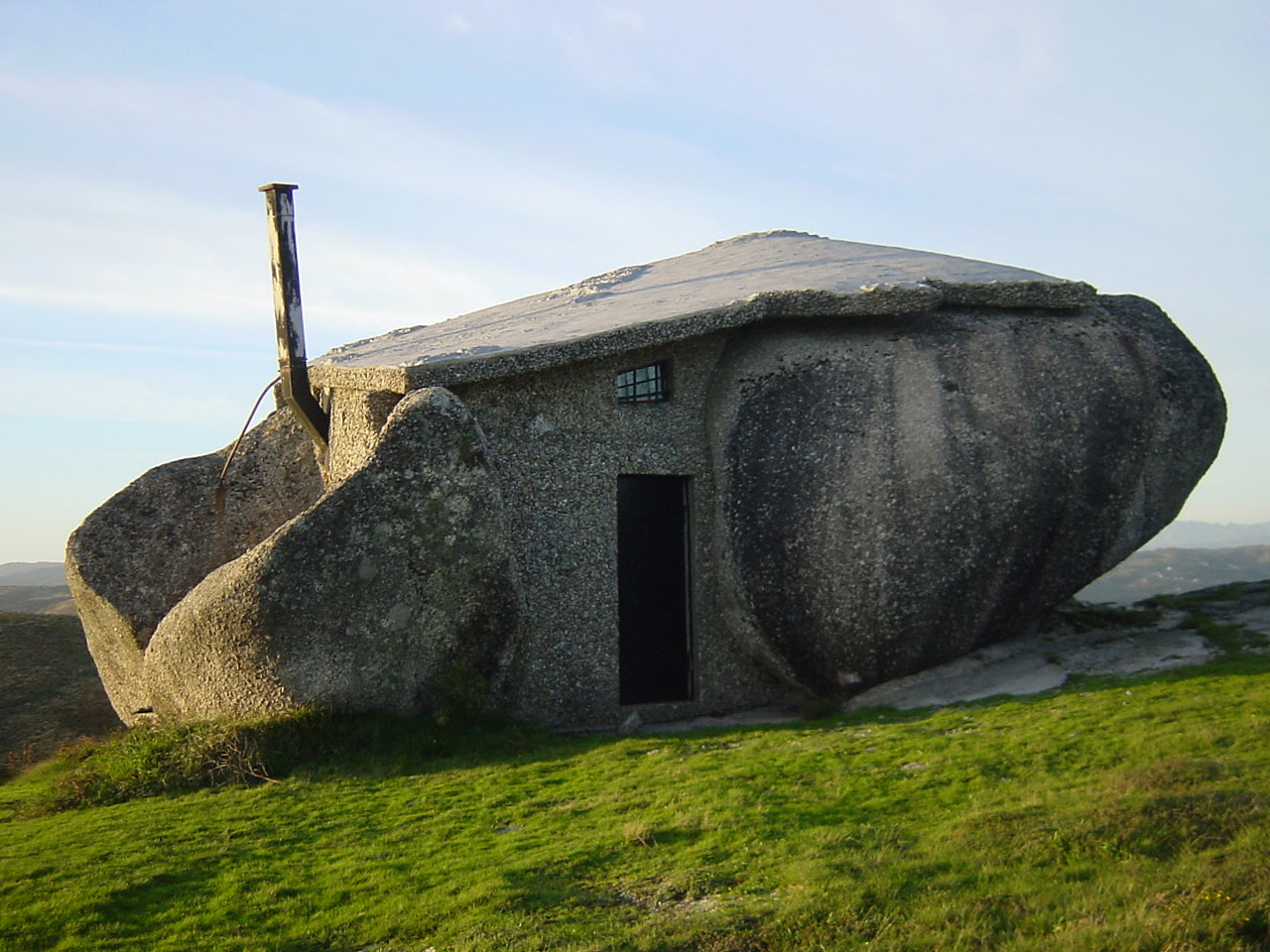Ancient Inspirations

I’ve been noodling all week about what form a sustainable tiny house city might take. While my recent online wanderings into the city planning of Black Rock City got me started on this quest, its overall design is really geared for the week-long Burning Man event.
Models for truly sustainable cities would need to focus on other requirements in order to meet the year-after-year needs of its residents. This is why these particular ancient places popped back into my mind.
- Pueblo Bonito in Chaco Canyon
- Cliff Palace in Southern Colorado and part of the Mesa Verde National Park
- Puye Cliff Dwellings near Espanola, New Mexico
- The Hopi Mesas in Northern Arizona
- The Taos Pueblo in Taos, New Mexico
Pueblo Bonito (above) was occupied for about 300 years starting in AD 828 and had between 650 and 800 rooms over 2-acres of land. The total peak population is unknown; some estimate it had been the home to several thousand people and others suggest it was home to less than 100 and served as a ritual or trading center.
While the potential peak population estimates fluctuate greatly, most agree that Chaco Conyon became uninhabitable due to a combination of local deforestation and an extended drought. Sadly this makes Pueblo Bonito an excellent example of what can happen when non-renewable natural resources are exhausted and water runs dry.
Cliff Palace (above) had about 150 rooms. It’s estimated that it took about 20 years to build and was continuously inhabited from about AD 1190 through c. 1260. Drought is suspected as the main cause for it’s abandonment.
The Puye Cliff Dwellings have a similar story. It was the home of about 1,500 people and built into the top and sides of a mesa. It was abandoned in 1577 due to drought, after several hundred years of occupancy.
Not all the ancient cities of the southwest were abandoned. The next two, the Hopi Mesas and The Taos Pueblo have been continuously inhabited for hundreds of years. Some say more… and I tend to believe them.
While living in the southwest I never had the opportunity to visit the Taos Pueblo, but I did spend about a month (two two-week visits in 1984 and 1985) staying with a family in Shongopavi, a Hopi village on Second Mesa.
The lessons that can be learned from these ancient communities can (and do) fill many volumes, but after you’ve dug through it some core lessons emerge.
- We must respect the land and recognize our role as an integral piece of the natural environment.
- We must live smartly within our means and use our natural resources at renewable rates.
- We must keep population well within the limits of our local natural resources to avoid trouble during hard times.
- We must choose to live in places with natural physical barriers to avoid trouble from invaders.
- We must choose a place that has a good chance of providing water and food for long periods of time.
I think the core requirements for a truly sustainable city (or civilization) must include these things. It may also be obvious that I might be thinking our current global civilization has been headed down the wrong path for some time.
Instead of spending too much time dwelling on how wrong we’ve built it, and how vulnerable we may be, I like to spend my time thinking about how we might build something better, inspired by the wisdom of the past.

Above: Walpi, a Hopi village on First Mesa. Below: Taos Pueblo. Photo credit Wikipedia.



I have a blog post in which I speculate about the beginnings of a practical and economical way to be sustainable with regards to water and power.
The thing is, I’m a little dubious about trying to last hundreds of years, though. Times change. Also, the provisions for keeping invaders out is pretty limited utility, and probably a lot more work (finding a suitable location) than it is worth.
But stepping lightly on the land has a number of practical benefits in the shorter term, too, as I mention in my post.
I should do a post about food….
Thanks Parrot, I’ll check out the post.
I didn’t preface the ‘invaders’ comment in this post, but I figured it was obvious that this was one of the reasons these ancient peoples built on mesas and into cliffs. It isn’t a fool-proof mechanism for ensuring security but it’s akin to locking our doors at night. A perfect piece of land for fortification would probably be very difficult to find but the topic should probably be left on the table.
If you built in the Midwest rather than the Southwest, greater rainfall would make water less of a problem.
The example communities you list are closer to apartments or condos than houses; is there an important lesson there?
I just came across a very interesting article on pykrete, a form of ice mixed with wood pulp (think adobe, but using ice as the binder) that apparently melts very slowly. http://www.cabinetmagazine.org/issues/7/floatingisland.php It might be worth investigating as a building material for cooler climates.
Very true Jeff… while the desert can be very habitable choosing a more moist and temperate climate would make life a bit easier.
You’re right about the density issue too. Suburbia is not sustainable simply because it’s not on a human scale. Higher density and closer proximity to food production should also be on the list.
Ice and wood pulp? I’ll check it out thanks!
If a dwelling site takes 20 years to build and is used only 70 years its not really a good example of sustainability…
Maybe we should be looking at even older cultures.
You’re right, but we can also learn from the old mistakes, I believe that’s the point of the article. Our civilization is so obsessed with today that it tends to forget about tomorrow (and even yesterday as well). We don’t care much about the sustainability of anything we do, do we? We’d build a house, then tear it down after 50 years and build another one on its site. But our resources are also limited and we should keep that in mind.
Hey,
I don’t know if you already knew this, but there is a whole community of people already interested in the tinyhouse village idea: http://www.tinyhousevillage.com
Thanks Parrot… and I should probably ask Hillary about how it’s ging. She started this up a while back as a members-only site so I don’t know how successful it’s been. She posted publicly about it again the other day after a long silence.
Does anyone know of good designs for underground housing in the Midwest? I’m inspired by Mike Oehler’s $50 & Up Underground House Book, but I’d love to see successful examples of that design in our humid climate before moving forward. The appeal of building underground for me is cost savings, and heating/cooling energy savings due to the ground’s thermal mass. Any advice would be greatly appreciated!